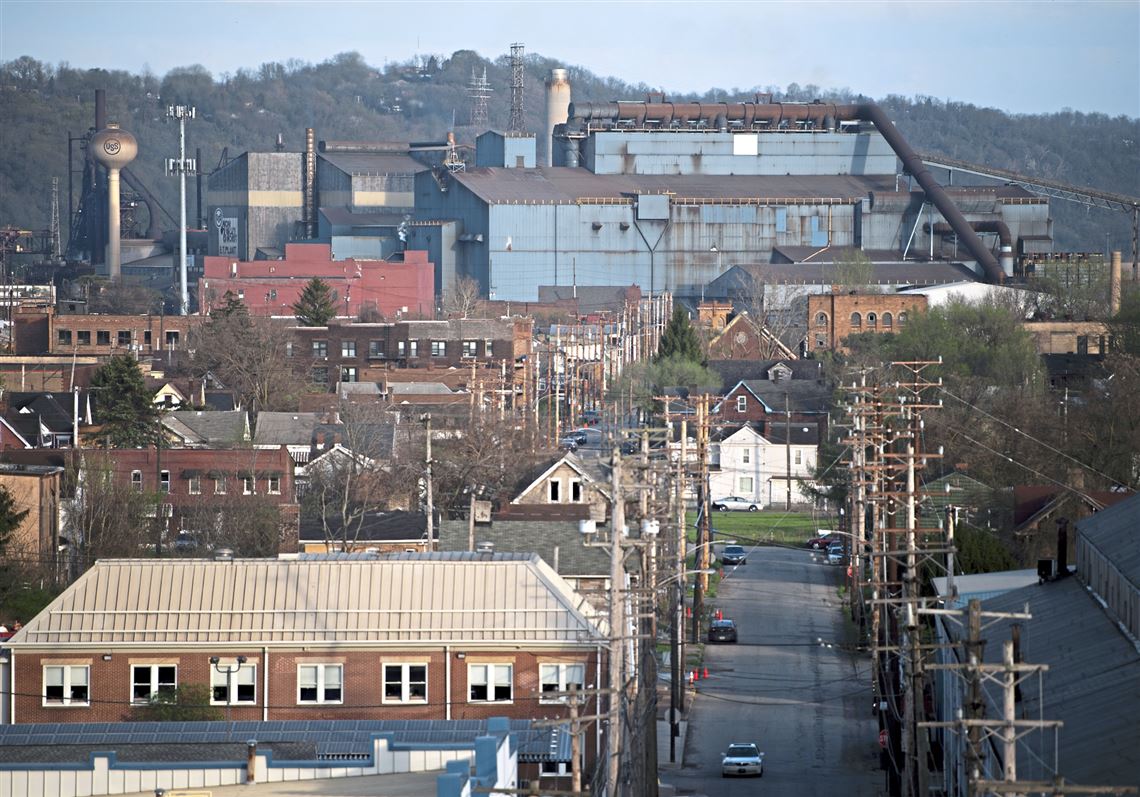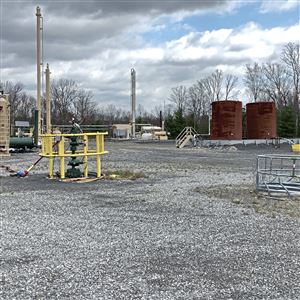The next iteration of energy production in southwestern Pennsylvania is likely to lead where its predecessors began: to landowners’ doors.
Do you know your pore rights?
Landmen have come around for coal rights. They’ve leased oil and gas — first in the earth’s shallow layers and then in deep, tight rocks like the Marcellus and Utica shales. They’ve gotten easements for pipelines and transmission lines, solar panels and salt caverns.
To achieve the new vision for the Pittsburgh region — a vast hub for hydrogen production and carbon sequestration — natural gas would be used to make hydrogen, and then the resulting carbon dioxide emissions, along with those from other industries, would be captured and pumped deep underground into the pores of reservoirs that landowners may not even know they own.
Pore leases might be the first blocks of a vast infrastructure needed to realize this vision, which has great support from the region’s power players.
States interested in advancing the concept of a hydrogen production and carbon storage hub — and vying for $8 billion in federal funding allocated to these efforts — are attempting to put in place some of that administrative scaffolding.
In Pennsylvania, a bill that would address pore ownership and liability for stored carbon, is expected to be introduced in the coming weeks by state Sen. Gene Yaw, R-Lycoming. It is modeled after a similar law enacted in Nebraska last year but may also draw on recent legislation that passed in West Virginia, said Mr. Yaw’s chief of staff, Nick Troutman.
Such laws already exist in Wyoming, North Dakota and Montana.
“These issues came up earlier out West than they did here,” Jesse Richardson, a professor of law at West Virginia University and its lead land use attorney, said last week. “East of the Mississippi, this is all kind of new. We’re just dipping our toe into it, and we don’t have it figured out.”
The big idea
Within the past year, hydrogen production and carbon sequestration have replaced southwestern Pennsylvania’s previous attempts to make the most of its natural gas reserves.
An energy vision released by the Allegheny Conference on Community Development last week includes the pursuit of hydrogen production and carbon storage alongside building efficiency and electrification. During numerous conferences over the past few weeks, advocates of hydrogen and carbon storage also sought to tie them to the production of rare earth elements, blending hydrogen into utility pipelines and making carbon black, a material used in tires.
If it seems like a kitchen-sink approach to decarbonization, it’s because that’s what proponents say is needed to tackle the scale of the problem of climate change.
The vision is still somewhat amorphous. There is exactly one company — U.S. Steel — that has publicly said it would buy higher-priced hydrogen fuel, and no company has even begun to test CO2 sequestration in Pennsylvania.
Still, the idea has broad and bipartisan support.
“We’re all in,” Allegheny County Executive Rich Fitzgerald declared before a crowd at the Energy Innovation Center earlier this month. “Gov. [Tom] Wolf is all in. All the candidates that will be replacing Wolf, on both sides of the aisle, they’re all in, too.”
The hydrogen production and carbon storage hub is a conceptual behemoth. On to it, stakeholders project their own hopes and fears. Some see billions of dollars in investment, a buildup of industry, a future for natural gas in this region.
While the focus is on decarbonization, “the areas that have profited to date from the natural gas will continue to do so, because it’s very much part of this energy transition we’re trying to make,” said Shell’s Hilary Mercer, senior vice president of the Pennsylvania Chemicals Project, during a Zoom event last week.
Others see a new cycle of hype that will grip and paralyze the region for years before fizzling out. Such was the case when Appalachia was almost certainly going to attract a handful of cracker plants in addition to the one Shell has built in Beaver County but didn’t. Or when the region seemed poised to become an ethane trading hub, which never materialized.
The hydrogen production and carbon storage hub idea overwhelms the others in scale and ambition. It also overwhelms them in a way that’s harder to conjure: the enormity of the legal and regulatory infrastructure that doesn’t exist but would need to be created to permit, regulate and oversee this idea.
“We’re going to need regulatory agencies, clear statutes, clear laws — just like with minerals, with oil and gas,” said Rob Wingo, executive vice president of corporate ventures at EQT. “You need to understand how liabilities are going to work.”
Owning to the center of the earth
While hydrogen is the new spice in the soup, the backbone of this plan is carbon capture and storage, an idea that has been around for decades.
Legal issues such as pore ownership and liability for carbon sequestration were being discussed more than a decade ago — the last time that carbon capture and sequestration was a hot topic — when it looked reasonably likely that then-President Barack Obama would push through legislation that caps carbon emissions.
The Pennsylvania Department of Conservation and Natural Resources commissioned a study from TetraTech exploring the geological and legal feasibility of carbon sequestration on state lands.
The West Virginia Legislature ordered that a carbon dioxide working group be assembled to explore what future laws and policies are needed to encourage the development of carbon capture and sequestration. When the working group presented its report in 2010, it concluded that pore ownership was a thorny and costly issue.
Common law, a colonial inheritance from Britain, generally holds that a landowner has the title to the surface, all the way to the center of the earth and above the property to the atmosphere.
The 1926 Air Commerce Act established the concept of public airspace; the expansion of aviation wouldn’t have been possible if commercial airlines had to pay each landowner for passing through a column of air above their land.
The West Virginia carbon dioxide working group imagined a similar dynamic if developers of carbon sequestration projects had to identify and get leases from each landowner above the desired reservoir. They calculated that simply doing the title work required for a project the size of the state’s Mason County — with its 20,000 surface owners and 1,000 mineral owners — would cost $100 million.
Instead, the West Virginia group proposed that the state Legislature designate pore space below 2,500 feet as public space if it wasn’t being used for oil and gas extraction.
The idea was being promoted at the time by the Midwest Governors Association, which favored eminent domain rights for carbon sequestration projects.
But the argument did not survive through the decade, when shale gas development dominated the attention of lawmakers and property rights attorneys.
When West Virginia passed new carbon storage legislation last month, it said project developers had to make agreements with landowners for pore space. But if they couldn’t get all of them to sign leases, the project could still go forward if they had the consent of 75% of them. The rest would be forced into the pool and compensated.
Mr. Yaw’s draft bill for Pennsylvania has similar language but puts that consent threshold at 60%.
The bills don’t establish a standard for who decides what would be a fair price for pore space.
While the pore space belongs to the landowner, the carbon dioxide stored within the reservoir belongs to whoever is sequestering it. The whole point of carbon storage is to ensure it stays underground for as close as possible to forever — a timetable that isn’t part of most business plans.
Carbon storage developers looking at West Virginia can transfer liability for the stored carbon to the state 10 years after injections stop. The Pennsylvania bill also provides for a transfer of ownership to the state after the project is done pumping CO2 into the ground, but it doesn’t specify a waiting period.
CO2 storage project owners would pay into a fund that the states would use to care for stored CO2 in perpetuity when they inherit it.
Anya Litvak: alitvak@post-gazette.com.
First Published: April 25, 2022, 10:00 a.m.
Updated: April 25, 2022, 10:11 a.m.





















